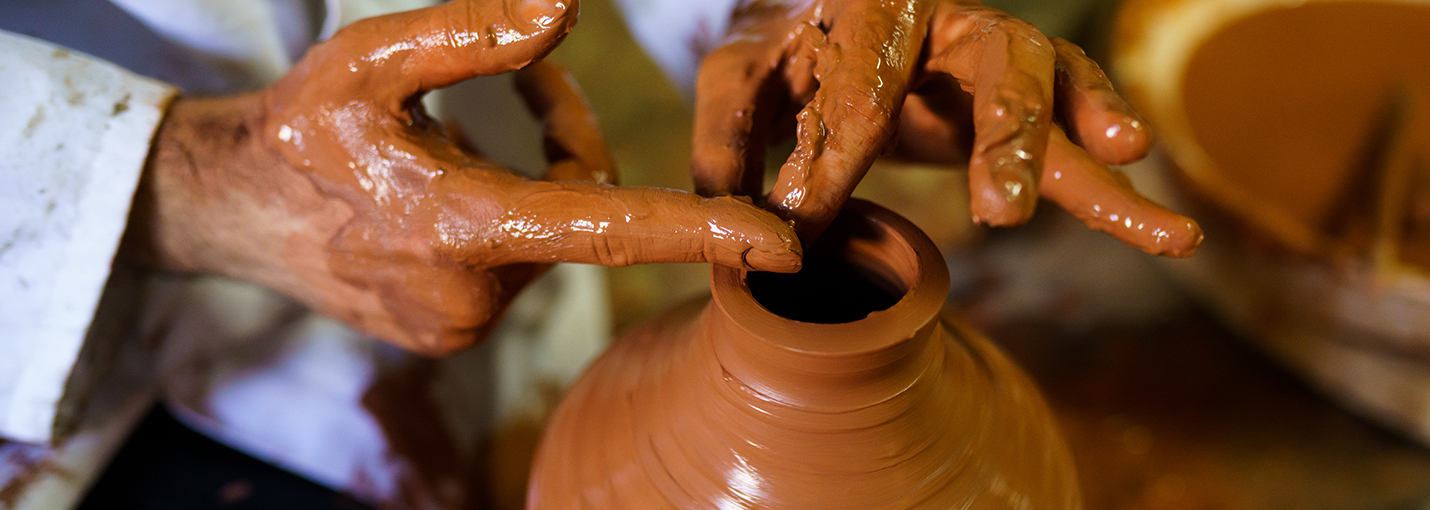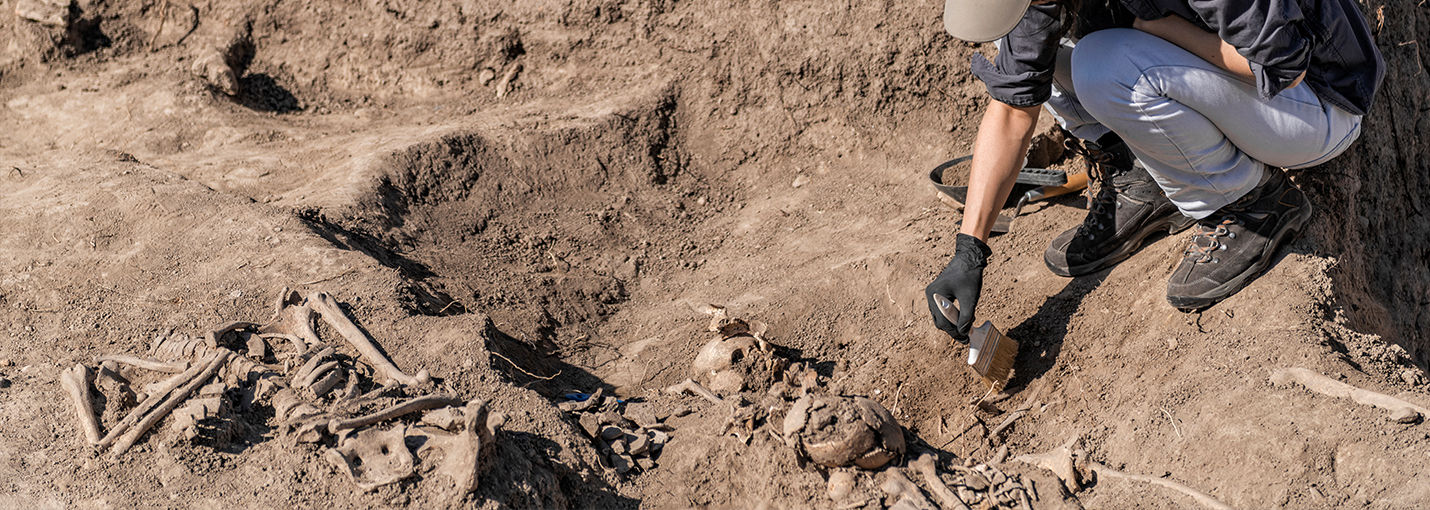The Ancient Kiukainen Pottery of Finland
While some may assume that asbestos is a modern marvel, this material is actually an essential piece of ancient history. This is especially true when it comes to the ancient culture of the Kiukainens. Here’s how they used asbestos and what they can teach us about the dangers of exposure.
Who Were the Kiukainens?
Dating back to the close of what we consider the Stone Age, a people group known as the Kiukainens existed in the coastal regions of Finland, living roughly between 2500-1800 BC. Today, this ancient culture is known as one of the most prominent Asbestos Ware cultures in Finland.
Unfortunately, there still remains a need for further research into this culture. In fact, the first in-depth research into the Kiukainens did not occur until the beginning of the 20th century.
Even today, we don’t have a wide range of carefully preserved historical documents from the Kiukainens or surrounding nations that may have interacted with them. However, what we do have gives us a glimpse into their way of life, as well as the hazards they were exposed to in the materials they used day by day.
That’s because the Kiukainen culture is best known for its pottery and stone artifacts that have been discovered and preserved in various locations.


The kind of pottery style used by the Kiukainens was known as the Corded Ware tradition, a decorative style of pottery that typically had a series of cord-shaped impressions and ornamentations. But this pottery is not only notable because of its design features; it also contained a deadly material we know as asbestos.


Did They Know About This “Amazing” Material We Call Asbestos?
According to research focusing on the use of asbestos as far back as 4000 B.C., asbestos was a material that was considered virtually “magical” because of its amazing properties. Some of these properties include strength, heat resistance, and resiliency. Even when asbestos materials are harvested and broken down into small fibers, they still retain all of these qualities, making them very multi-functional.
Using asbestos in pottery was a great way to ensure that the hard work of pottery artists could stand the test of time. Of course, the purpose of using asbestos during that time had more to do with trying to protect pottery from fire and other destructive elements, but the fact that we have unearthed so many of these varieties of pottery, earthenware, and combs proves that their method worked.


Asbestos: Solving The “Where” and “How” Questions
But where did this group of related silicate materials we call asbestos come from?
And how did the Kiukainens and others know to use them?
It’s hard to tell whether the Kiukainens learned about the benefits of asbestos from Egyptians or other nations with a history of asbestos use, or if they just happened to discover the benefits of this material for themselves.
It is also unclear how certain areas that were far removed from natural sources of asbestos came to use them at such a widespread rate. However, there is evidence that the widespread use of asbestos represented a clue of cultural relations that united territories with one another with trade and skills.
What is clear from history is that the use of asbestos among the Kiukainen culture became a tradition that was past down into other areas and eras of Finland, including Paimio in south-western Finland and the Asva Ware of Estonia several centuries after the timeframe of the Kiukainens.
!
If you may have been exposed to asbestos, speak with your healthcare provider about tests and screening to help detect the presence of asbestos fibers and asbestos-related diseases.
No Record of Respiratory Illnesses?
While the discovered asbestos ware of the Kiukainen culture is our historical evidence of the use of asbestos for millennia, we’re left with many unanswered questions. Did the Kiukainens understand the dangers of asbestos?
The fact that there exists no direct evidence of respiratory illnesses from asbestos among the Kiukainen culture is noteworthy. With what we know about asbestos today, this kind of widespread use among the Kiukainen culture was sure to promote deadly illnesses.
But since asbestos was used from culture to culture, there was likely little (if any) knowledge of this material’s devastating impact over time.
Do You Qualify For Compensation?
Quickly and easily find out how you were exposed by searching W.A.R.D., the largest asbestos database on the planet.
FREE SEARCH >The Long Game of Asbestos Exposure
Then again, how could the Kiukainens not have known to associate lung diseases with exposure to asbestos?
This seems like a reasonable question to ask, but we often forget that we have both time and technology on our side. Using asbestos in pottery and ceramics was a cultural way of life, and this day-to-day interaction probably resulted in no noticeable side effects or symptoms. But this is the danger of the long game of asbestos exposure. Symptoms of asbestos illness can take decades (sometimes 50 years) to appear. Most likely, when these symptoms occurred among the Kiukainens, decades later, there would have been no obvious way to connect it back to asbestos exposure.
What Ancient Asbestos Teaches Us Asbestos in the Modern World
Unlike the ancient cultures who used asbestos as a part of their everyday lives, we are not unaware of the dangers. Sadly, even after widespread research had been conducted in order to show the dangers of asbestos, it continued to be used throughout the world in products, building materials like cement, and even safety equipment like gas masks.
Those who worked in asbestos-rich environments during the 19th and 20th centuries would come home and expose their families to asbestos, especially from their work clothes. This is known as second hand asbestos exposure or secondary exposure.
While the general public may not have been aware of the dangers of asbestos, the research had been done and the asbestos companies knew the findings. Unfortunately, they decided to keep using asbestos and exposing workers to this dangerous material.
Without the record-keeping processes we have today, there’s no way to know how many people died from asbestos exposure in ancient civilizations.
But in our modern era, we have the evidence and the test cases of thousands who have been exposed to asbestos and eventually developed mesothelioma or other life-threatening diseases. If you or someone you know has been exposed to asbestos, take action today and reach out to the experts at AsbestosClaims.Law for help.
AsbestosClaims.Law
AsbestosClaims.law is your comprehensive resource for all things asbestos. We hope this information is helpful.
If you have any additional questions or concerns related to asbestos, check out our website and YouTube page for videos, infographics and answers to your questions about asbestos, including health and safety, asbestos testing, removing asbestos from your home and building, and legal information about compensation for asbestos injuries.
If you believe that your home was contaminated with asbestos, or you believe that you were exposed to asbestos, or have been diagnosed with an asbestos illness, you could be entitled to significant compensation—money you could use to cover the costs of asbestos removal services, pay for medical treatment, and preemptively protect your physical well-being.
All without filing a lawsuit.
The largest database of asbestos information on the planet.
W.A.R.D., which stands for the Worldwide Asbestos Research Database, helps clients to narrow down when and where they may have been exposed, as well as which products may still contain asbestos. W.A.R.D. will also help indicate compensation types and how much a person may be entitled to.
If you’d like help with filing a claim, please get in touch by email at [email protected], or call or text us at (833) 4-ASBESTOS (427-2378) or (206) 455-9190. We’ll listen to your story and explain your options. And we never charge for anything unless you receive money in your pocket.




